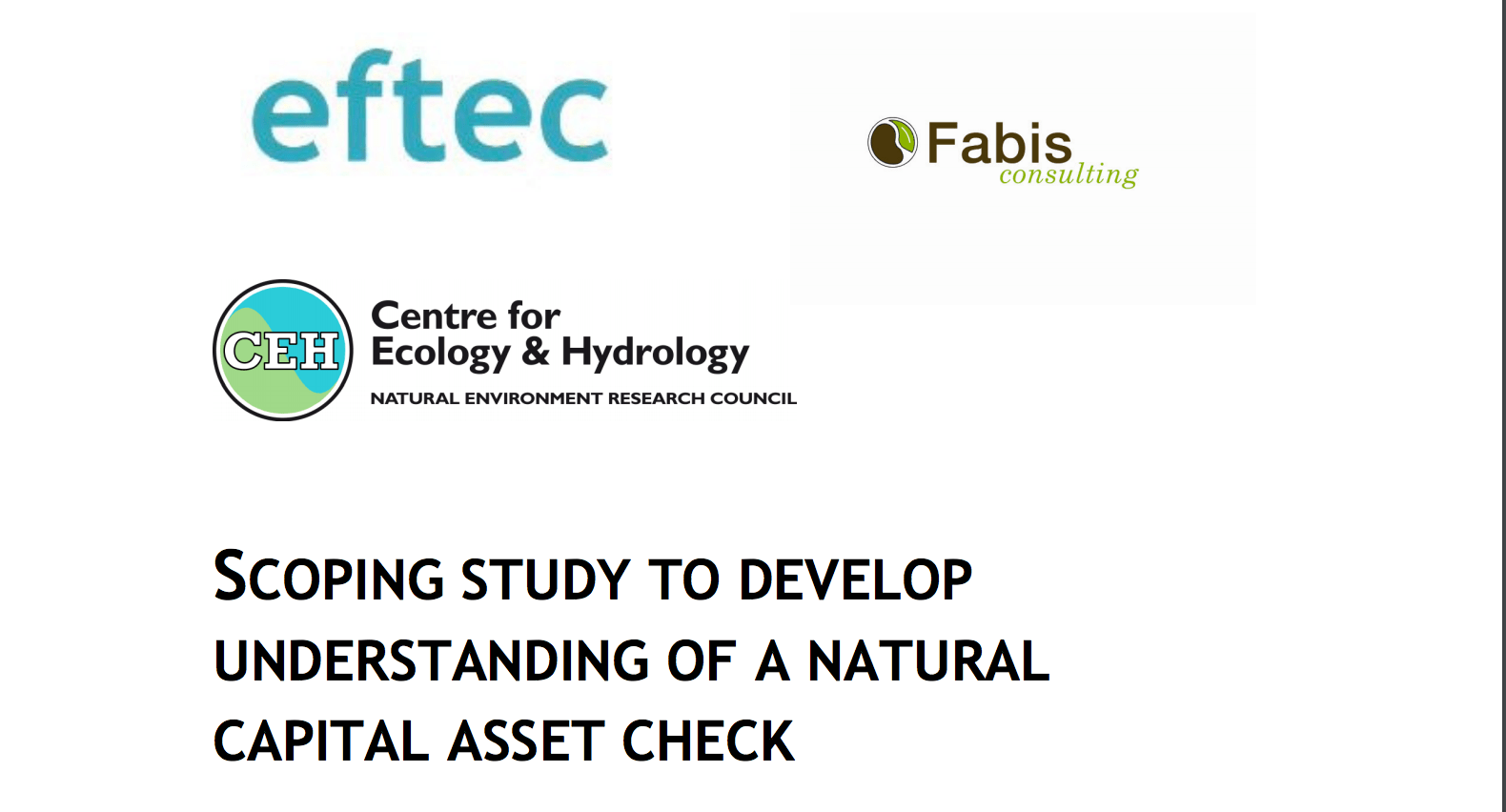
This is the final report for a study to scope the use of a natural capital asset check in the UK. The study has been led by Economics For The Environment Consultancy (eftec) with inputs from Roy Haines-Young (Fabis Consulting), Giles Atkinson (LSE and eftec associate) and Rosie Hails (CEH).
The aim of this study is to define what the scope of an asset check might be in the UK policy context, and to suggest and test assessment approaches that can be used operationally. To achieve this aim, the team reviewed the theory behind the key issues in an ‘asset check’ and its relationship to other environmental economics issues and appraisal methods. It did this in order to develop:
- The definition of an asset and an asset check, and how it differs from existing environmental economics techniques that provide decision-makers with information, such as environmental accounting, ecosystem services and impact assessment processes, and cost-benefit analysis.
- A suggested outline for a natural capital asset check method, covering its purpose, how data could be used to undertake it, and the presentation of its results in terms of future values and risks.
Natural capital assets produce value for human society. Our understanding of the links between physical assets, the services they provide and the benefits humans receive as a result has increased through application of ecosystem services concepts, and this in turn informs our management of natural capital. To improve that management, we want to understand how natural capital will continue to produce services over time, i.e. its physical resilience, which reflects both the condition and the size of the stock. We lack a systematic way to assess this resilience and feed it into management decisions – hence the desire to have a ‘natural capital asset check’ (NCAC).
The emphasis of the work is on enabling a practical outcome – in both methodological, and resource terms. Methodologically, the approach must be robust but also achievable with the current state of environmental-economic knowledge. Resource-wise, it must be deliverable from resources that are realistic in the context of public sector budget constraints and on a timetable that can inform policy and other decisions.
This introduction provides some background to the study and defines the ‘Problem Statement’ that the work intended to address. Section 2 summarises the project’s process of work. Section 3 describes the definition of a natural capital asset check and how it was tested. The findings about the scope of a NCAC approach are described in Section 4. The next steps in the work, primarily issues being carried forward into the UKNEA follow-on project’s natural capital asset check work package, are described in Section 5.
Download the report here.












